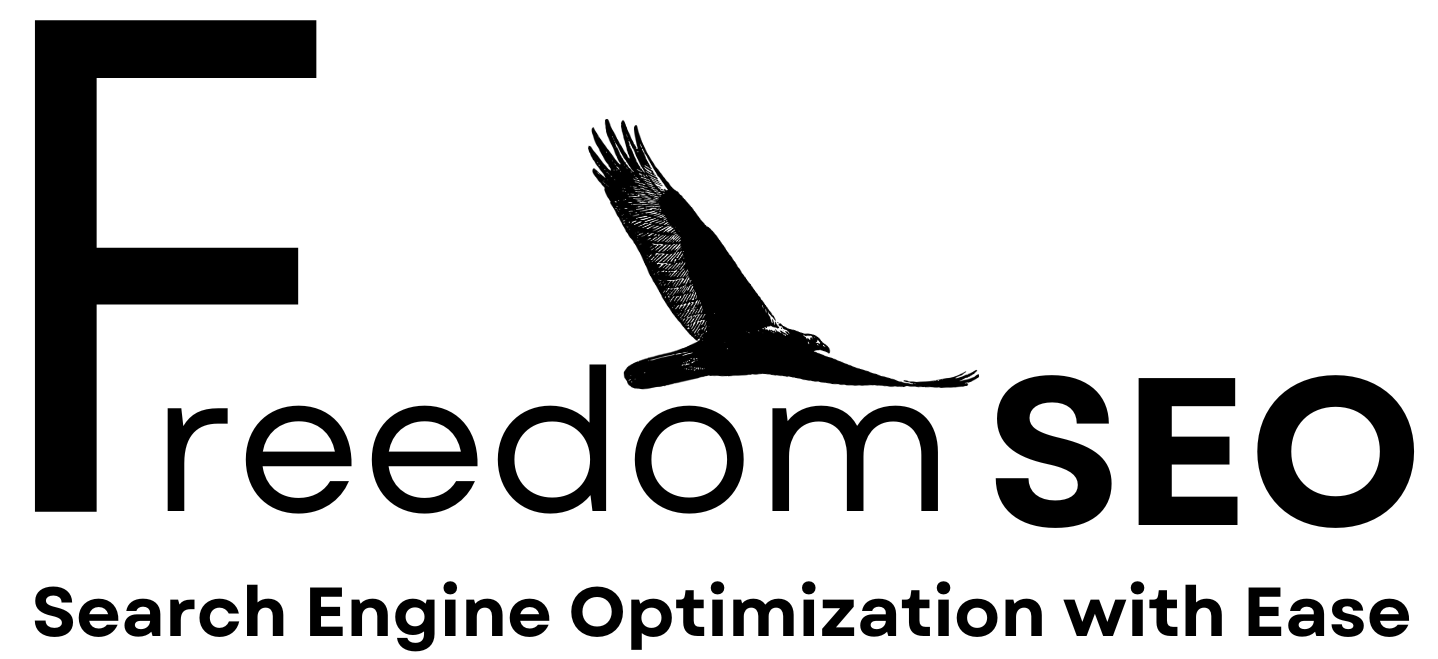Master Call to Action SEO for Increased Engagement

Your website’s calls to action might look simple but their impact is anything but small. Did you know a specific CTA like “Get Your Free Strategy Guide” can drive far more engagement than a generic “Learn More” . Most business owners focus only on catchy wording or colourful buttons, but the real secret lies in understanding exactly how users interact with every detail of your CTAs. Surprising patterns and big performance gains are just waiting to be uncovered once you know where to look.
Table of Contents
Quick Summary
| Key Point | Explanation |
|---|---|
| 1. Analyze Current CTAs Carefully | Review performance metrics like click-through rates to identify effective CTAs and areas needing improvement. |
| 2. Understand Target Audience Deeply | Create detailed audience personas and journey maps to tailor CTAs that resonate with their motivations. |
| 3. Optimize CTA Copy and Design | Use specific, benefit-driven language and attractive design to enhance user engagement and drive conversions. |
| 4. Implement CTAs Strategically | Position CTAs where users are naturally inclined to engage, ensuring consistency across all platforms. |
| 5. Continuously Monitor and Refine | Regularly review analytics to adjust CTAs based on performance data, promoting ongoing optimization and improvement. |
Step 1: Analyze Your Existing Calls to Action
Analyzing your current calls to action (CTAs) is the critical first step in optimizing your SEO engagement strategy. This process helps you understand how your existing CTAs perform and identify areas for improvement. By systematically evaluating your current approach, you’ll gain insights that transform your digital marketing effectiveness.
Performance Metrics Matter
Begin by gathering comprehensive data on your existing CTAs. Access your website analytics to review critical performance indicators like click-through rates, conversion rates, and user interaction patterns. Look specifically at which CTAs generate the most engagement and which seem to fall flat. According to research from Google Analytics , tracking these metrics provides direct insights into user behaviour and CTA effectiveness.
Careful examination reveals more than just numbers. Pay attention to the language, placement, and visual design of your current calls to action. Are they clear and compelling? Do they communicate a specific value proposition? Sometimes subtle changes in wording or positioning can dramatically improve user response. For instance, a CTA that reads “Learn More” might perform differently compared to “Get Your Free Strategy Guide” - specificity often drives higher engagement.
Strategic Evaluation Techniques
To conduct a thorough analysis, compile a comprehensive spreadsheet tracking each CTA’s performance. Include columns for:
- Current CTA text
- Page/location of CTA
- Click-through rate
- Conversion rate
- Target audience segment
This systematic approach allows you to objectively compare different CTAs and identify patterns. You might discover that CTAs placed near compelling content or following detailed explanations perform significantly better. Learn more about optimizing landing page conversions.
Remember, the goal isn’t just collecting data but transforming insights into actionable improvements. Each CTA represents an opportunity to guide your audience toward meaningful engagement, making this analysis phase crucial for your overall digital marketing strategy.
Below is a checklist to help you systematically evaluate the effectiveness of your existing calls to action before making improvements.
| Evaluation Criteria | What to Check For | Example/Details |
|---|---|---|
| CTA Text Clarity | Is the message clear and specific? | “Get Your Free Strategy Guide” vs. “Learn More” |
| Placement Effectiveness | Positioned after valuable content or explanations? | After product details or blog conclusions |
| Click-Through Rate (CTR) | Are users engaging with the CTA? | Compare ratios across different pages/sections |
| Conversion Rate | Do clicks lead to meaningful actions? | Purchases, form completions, downloads |
| Visual Design and Contrast | Does the CTA stand out visually? | High-contrast colour, easily noticed button style |
| Audience Relevance | Does the CTA match the needs of its intended users? | CTA aligns with target segment motivations |
| Consistency Across Platforms | Are CTAs uniform in messaging and design? | Web, email, and social all use similar CTAs |
Step 2: Identify Target Audience Preferences
Understanding your target audience is the cornerstone of creating effective calls to action that genuinely resonate and drive engagement. This step moves beyond generic demographics to uncover the deeper motivations, pain points, and communication preferences of your potential customers.
Deep Audience Research Techniques
Begin by constructing comprehensive audience personas that go far beyond basic demographic information. Dive into their online behaviour, search patterns, and specific challenges they encounter. Google Analytics and social media insights provide powerful tools for this exploration. According to research exploring user perceptions , understanding how users interact with digital content can dramatically improve your targeting strategy.
Conduct detailed interviews or surveys with existing customers to gain nuanced insights. Ask open-ended questions that reveal their decision-making processes, frustrations, and what truly motivates them to take action. Pay special attention to the language they use, the problems they describe, and the solutions they seek. These qualitative insights are often more valuable than quantitative data alone.
Mapping Audience Journey and Preferences
Create a comprehensive audience journey map that tracks how potential customers move from initial awareness to final conversion. This map should highlight key touchpoints where calls to action can be most effective. Consider developing a detailed spreadsheet that captures:
- Primary audience segments
- Typical online behaviour patterns
- Common search queries
- Preferred communication channels
- Emotional triggers
Utilize tools like customer relationship management (CRM) platforms to track and analyze interaction data. Explore advanced landing page optimization strategies to refine your understanding of audience engagement.
Remember that audience preferences are not static. Continuously update your research, monitor changing trends, and be prepared to adapt your approach. The most successful calls to action are those that feel personally crafted for the specific audience, addressing their unique needs and aspirations with precision and empathy.
Step 3: Optimize Call to Action Copy and design
Optimizing your call to action (CTA) copy and design is a strategic process that transforms casual website visitors into engaged potential customers. This step bridges the gap between audience understanding and compelling action, focusing on creating CTAs that not only attract attention but inspire immediate response.
Crafting Compelling CTA Language
Start by developing CTA text that speaks directly to your audience’s needs and desires. Every word must communicate value and create a sense of urgency. According to Stanford University’s User Experience Guide , effective CTAs begin with strong action verbs that clearly indicate what users will gain. Instead of generic phrases like “Click Here,” use specific, benefit-driven language such as “Get Your Free Strategy Guide” or “Unlock Exclusive Business Growth Insights.”
Consider the emotional trigger behind each CTA. Are you solving a problem, offering a unique opportunity, or promising transformation? Your language should resonate with the specific pain points you identified during audience research. Precision matters more than length - a concise, powerful message often converts better than verbose explanations.
Strategic Visual and Placement Optimization
Design plays an equally critical role in CTA effectiveness. Create visual hierarchies that naturally draw the user’s eye toward your call to action. Use high-contrast colors that stand out from your page background, ensuring the CTA button is immediately noticeable. Size and placement are crucial - position CTAs where users naturally pause or after providing compelling context that motivates action.
Develop multiple CTA variations to test performance. Create a spreadsheet tracking different versions, including:
- Original CTA text
- Revised text version
- Color scheme
- Placement on page
- Conversion rate
Explore advanced landing page optimization techniques to refine your approach. Remember that optimization is an ongoing process. Regularly review analytics, conduct A/B testing, and be prepared to adapt your CTAs based on real user behaviour and engagement data.
This table summarizes key steps for optimizing CTA copy and design, helping you focus on both messaging and visual impact.
| Step | Focus Area | Key Action or Outcome |
|---|---|---|
| Craft Specific CTA Text | Messaging | Use actionable, benefit-driven language |
| Include Emotional or Value Triggers | Motivation | Address pain points or desires |
| Use High-Contrast Visuals | Visual Design | Ensure CTA stands out on page |
| Test Multiple Versions | Performance Optimisation | A/B test text, colours, and placement |
| Track Analytics by Variation | Continuous Improvement | Monitor conversion metrics for each CTA version |

Step 4: Implement and Place Calls to Action Strategically
Implementing calls to action (CTAs) strategically transforms website visitors from casual browsers into potential customers. This critical step requires thoughtful placement and precise execution to guide users seamlessly through their digital journey.
Strategic Positioning and Navigation
Consider your website’s user journey when positioning CTAs. They should appear naturally within content flow, anticipating user needs at each interaction point. According to research from the University of Iowa , effective CTAs are most impactful when integrated strategically rather than randomly distributed. Place primary CTAs where users are most likely to be motivated: after solving a problem, providing valuable information, or demonstrating clear value proposition.
Each webpage should have a primary and potentially secondary CTA that aligns with the specific page’s objective. For product pages, this might be “Add to Cart” or “Get a Quote.” For informational content, consider CTAs like “Download Full Guide” or “Schedule a Consultation.” Consistency in design and messaging is key to maintaining user trust and encouraging action.
Multiplatform CTA Integration
Extend your CTA strategy across different digital platforms to create a cohesive user experience. Your CTAs should maintain consistent branding and messaging whether they appear on your website, email campaigns, social media profiles, or digital advertisements. Create a comprehensive tracking system to monitor CTA performance across these channels:
- Webpage location
- Click-through rates
- Conversion percentages
- User demographic engagement
- Time spent after CTA interaction
Learn more about optimizing landing page conversion strategies to refine your approach. Remember that CTA implementation is an ongoing process of testing, measuring, and adapting. Regularly review analytics, conduct A/B testing, and be prepared to adjust your strategy based on real user behaviour and engagement data.
Step 5: Monitor Performance with Analytics Tools
Monitoring your call to action (CTA) performance through analytics tools is the ultimate validation of your strategic efforts. This critical step transforms raw data into actionable insights, helping you understand exactly how users interact with your digital content and where improvements can be made.
Setting Up Comprehensive Performance Tracking
Begin by configuring robust analytics platforms like Google Analytics to track specific CTA interactions. Configure event tracking for each call to action, capturing detailed metrics such as click-through rates, conversion percentages, and user engagement patterns. According to research from the Open University , effective analytics go beyond simple numerical counts, offering deeper insights into user behaviour.
Create a dedicated dashboard that visualizes key performance indicators. This allows you to quickly identify which CTAs are performing exceptionally well and which might need refinement. Pay close attention to metrics like time spent after clicking, bounce rates, and conversion funnel progression. These indicators reveal not just whether users clicked, but how meaningful those interactions were.
Advanced Performance Analysis Techniques
Develop a systematic approach to performance evaluation by maintaining a comprehensive tracking spreadsheet. Document and compare CTA variations across different platforms and content types. Your tracking should include critical metrics such as:
- Total impressions
- Click-through rates
- Conversion percentages
- User demographic engagement
- Average time on page post-interaction
- Conversion value
Learn more about measuring SEO success comprehensively to refine your analytical approach. Remember that analytics are not a one-time task but an ongoing process of continuous improvement. Schedule monthly review sessions to analyze trends, identify emerging patterns, and make data-driven adjustments to your CTA strategy. Your goal is to transform raw data into strategic insights that consistently enhance user engagement and drive meaningful conversions.
Step 6: Adjust and Refine Based on Data Insights
Adjusting and refining your call to action (CTA) strategy based on data insights is the transformative process that elevates your digital marketing approach from guesswork to precision. This step is about translating analytical findings into strategic improvements that continuously enhance user engagement and conversion potential.
Systematic Performance Evaluation
Begin by conducting a comprehensive review of your analytics data, focusing on identifying patterns and anomalies in user interaction. Look beyond surface-level metrics and dive deep into understanding the nuanced behaviours driving user decisions. According to research from the U.S. Department of Energy , regular analysis of search data helps pinpoint exactly how users interact with your content and where potential improvements can be made.
Create a systematic approach to data-driven refinement. For each CTA that underperforms, develop a hypothesis about why it might not be resonating with your audience. Consider factors like placement, wording, design, and the specific context in which the CTA appears. This analytical mindset transforms potential shortcomings into opportunities for strategic optimization.
Iterative Improvement Process
Implement an agile refinement strategy that allows for continuous experimentation and improvement. Develop a structured process for testing and implementing changes, ensuring each modification is purposeful and measurable. Create a detailed tracking document to monitor your CTA evolution:
- Original CTA performance metrics
- Proposed modifications
- Rationale for changes
- Expected improvement areas
- Actual performance after implementation
- Comparative analysis
Explore our comprehensive guide to measuring SEO success to deepen your analytical skills. Remember that optimization is an ongoing journey. Set a recurring schedule for review and refinement, typically monthly or quarterly, to ensure your CTAs remain dynamic and responsive to changing user behaviours. The most successful digital strategies are those that embrace continuous learning and adaptability.

Take Control of Your Call to Action Strategy for Real Results
Are you frustrated by low click-through rates and CTAs that never seem to deliver? “Master Call to Action SEO for Increased Engagement” proves that optimizing your calls to action can guide more potential customers to your business. But the article also highlights a challenge many Canadian business owners face: making sure your CTA messaging, placement, and design convert traffic into real leads. If you want better conversion rates and stronger local visibility, it’s time to act on these data-driven insights.

Let Freedom SEO help you transform your approach. We have a proven track record in local SEO and website optimization for Canadian businesses. Our team uses advanced analytics to monitor each CTA’s performance, then refines your approach for higher engagement and better rankings. You get faster turnarounds and the confidence of guaranteed results . Visit Freedom SEO to discover how our landing page optimization services can move you into Google’s Top 3. Ready to make your CTA truly work for you? Contact us today for a free consultation and start seeing measurable improvements in both your engagement and your online growth.
Frequently Asked Questions
How can I analyze the effectiveness of my current calls to action?
To analyze the effectiveness of your current calls to action (CTAs), gather data from your website analytics, focusing on performance metrics such as click-through rates, conversion rates, and user interaction patterns. Create a spreadsheet to track each CTA’s performance for systematic evaluation.
What factors should I consider when optimizing the copy of my CTAs?
When optimizing CTA copy, consider using strong action verbs, communicating specific value propositions, and creating urgency. Make sure your language resonates with your audience’s pain points and motivations while keeping the message concise and impactful.
How do I determine the best placement for my calls to action on my website?
The best placement for CTAs on your website is where they naturally fit within the content flow and at key touchpoints. Place CTAs after providing valuable information or solving problems to align with user motivation and encourage action.
What analytics tools should I use to monitor CTA performance?
Utilize analytics platforms like Google Analytics to track specific CTA interactions. Set up event tracking to capture detailed metrics such as click-through rates and user engagement patterns. Creating a dedicated dashboard can help visualize key performance indicators and identify areas for improvement.
Recommended
















